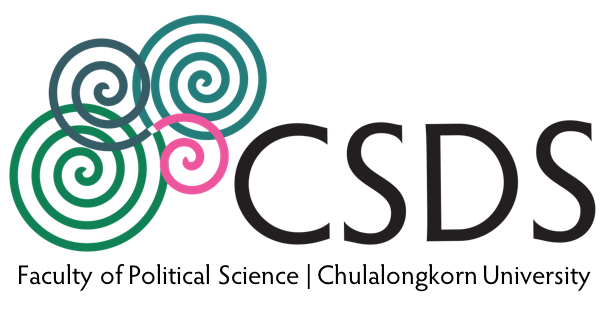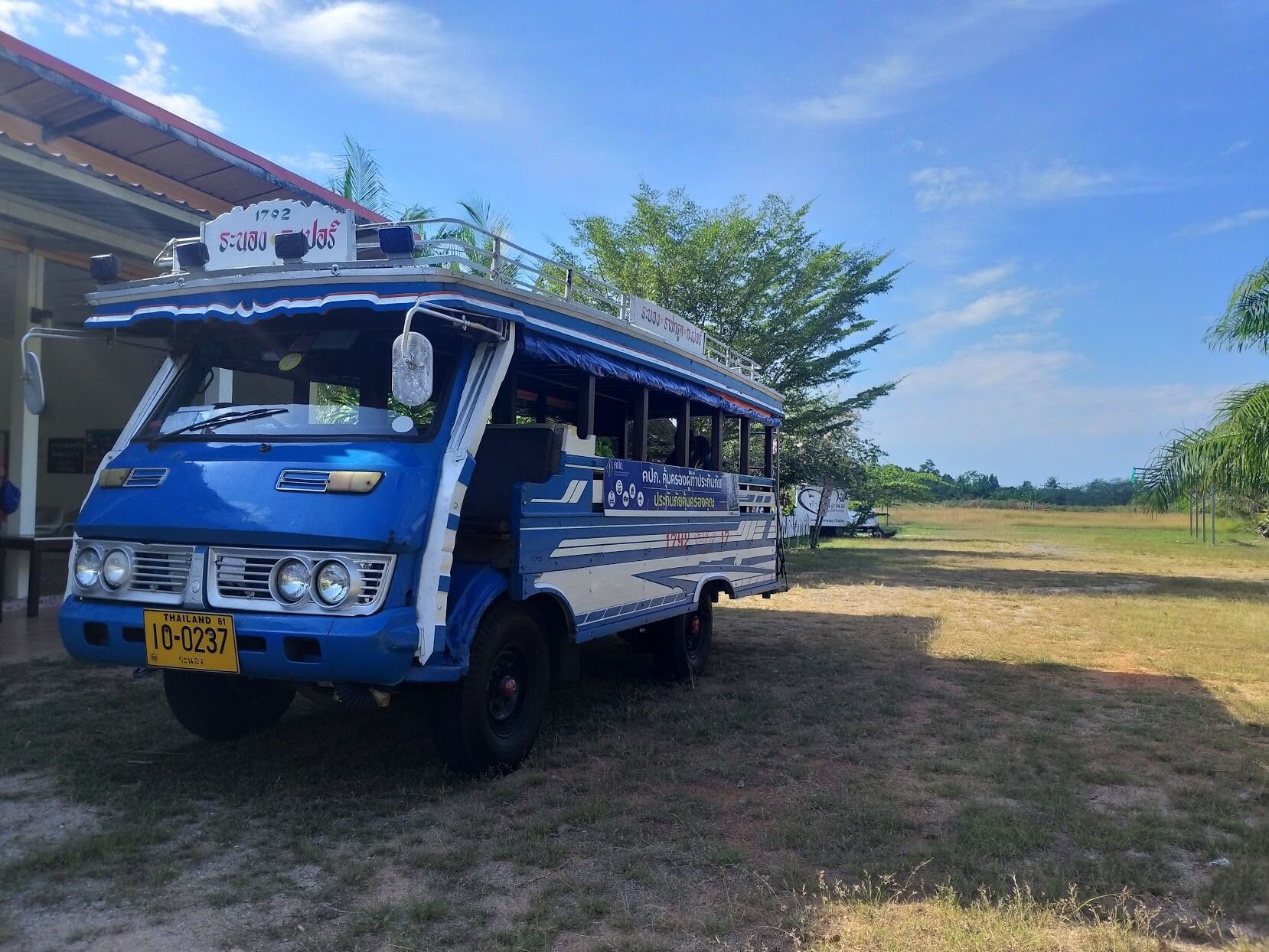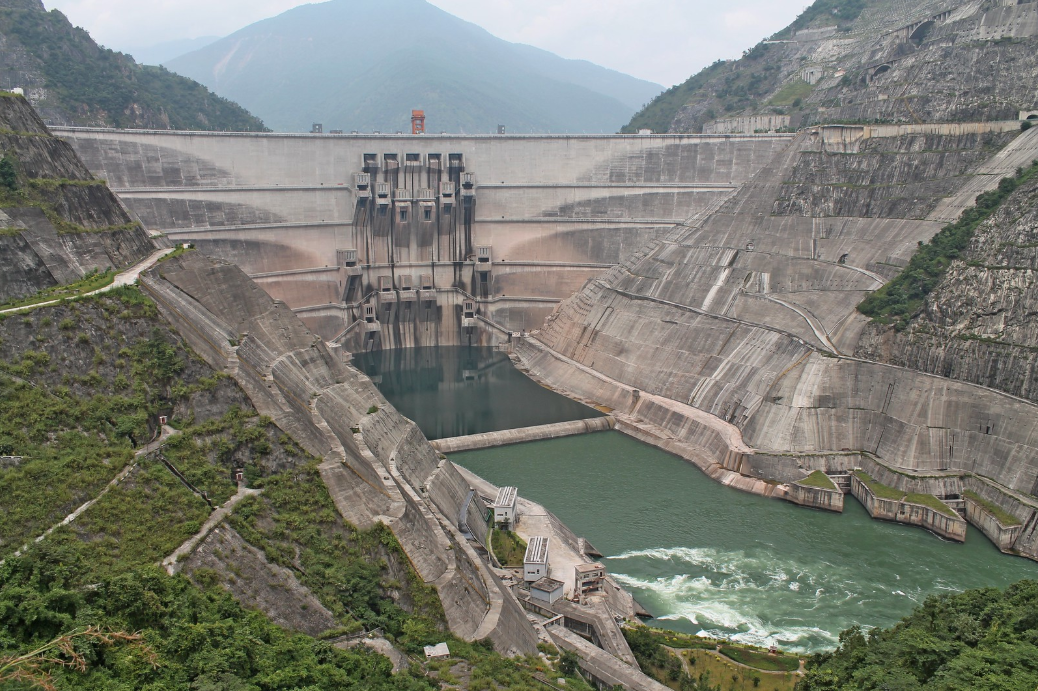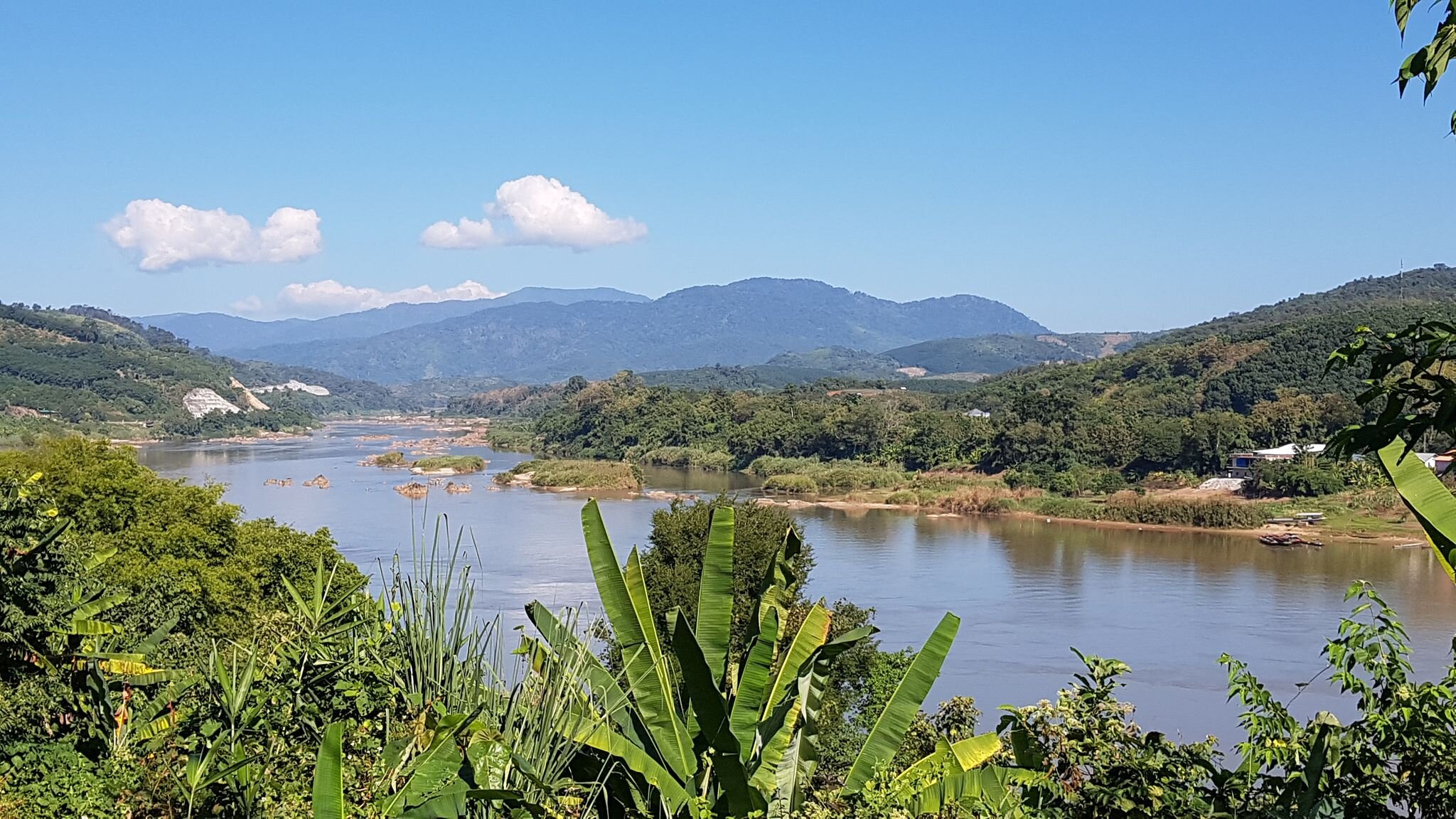Introduction
The Mekong Region is currently facing a serious drought. Despite there being possibly three months until the next rainy season, the Lancang-Mekong River is already extremely low, with sand bars and rocky outcrops exposed along many stretches of the river. The drought places at risk ecosystems, fishing and farming livelihoods, wider food security, and even drinking water supply. For the millions whose livelihoods depend upon the river’s resources, the drought is creating severe hardship - compounded now further by the COVID-19 pandemic.
The current drought is in fact the continuation of last year’s drought, which was already the worst in living memory.[ii] The delayed monsoon finally arrived in July, but then finished early and failed to fully replenish water sources. The drought’s intensity is further amplified by the El Niño weather pattern, which has raised temperatures and rates of evapotranspiration.[iii] The extent to which climate change is nowadays acting upon the basin is also an increasingly debated question[iv], and the subject of a growing number of studies.[v]
It has also been vigorously debated whether large dam infrastructure in the basin has exacerbated the impact of the drought, or could have been operated differently to better mitigate its impacts. A particular focus has been on the upstream dams in China, where eleven projects have been progressively built on the Lancang (upper-Mekong) River mainstream since the early 1990s. This is because a significant proportion of the river’s dry-season flow originates from China, from the glacial melt of the river’s headwaters in the Tibetan Plateau, and more recently due to the significant reservoir storage now in place.
As the impacts of climate change deepen, severe drought threatens to become a part of the ‘new normal.’ The challenge of equitably ensuring water, food and energy security for all underscores the importance of improving - and rethinking - water governance and drought adaptation in the basin in the context of climate change.
Anticipated impacts of climate change
The Lancang-Mekong River is one of the world’s major river basins, and is second only to the Amazon in terms of biodiversity. Measuring 4,800 kilometers along the mainstem, it traverses China, Myanmar, Laos, Thailand, Cambodia and Vietnam. 72 million people live within the basin, and for a majority access to river resources remain central to livelihoods. The river was largely free-flowing until the early 1990s, but nowadays it’s seasonal cycle of monsoon flooding and dry-season low flows are shaped by extensive hydropower dam operation.[vi]
According to UN-Water, “Water is the primary medium through which we will feel the effects of climate change.”[vii] In the Mekong region, anticipated and already occurring changes to the climate and hydrology, as well as sea-level rise, are increasingly center to public debates and policy concerns. Whilst there is always uncertainty in making predictions on climate change, the best available analysis anticipates weather change including a mean temperature rise of 0.2 oC per decade, a regional increase in annual precipitation of 200 mm, more regular severe floods and droughts, and greater seasonal uncertainty. Meanwhile, sea level rise will increasingly threaten the low-lying delta area.[viii]
Climate change trends, however, need to be considered in the context of existing challenges within the basin. These include the changing flow regime and reduced sediment loads due to extensive dam construction, loss of wetlands and degrading riverine ecosystems, and weaknesses in transboundary water governance including incomplete water data sharing and the accountability of river-related decision-making – especially related to large hydropower dams [ix]. Climate change will intersect with and amplify these challenges[x], posing risks to terrestrial and aquatic ecosystems, agriculture and fisheries, livelihoods and food security, as well as national economic growth, especially under drier climate scenarios.[xi]
For example, the delta area in Vietnam is at risk from sea-level rise, a risk that is further heightened by the reduced sediment load of the river due to dam construction and sand mining, and even the changing patterns of tropical cyclones, which have until now washed more sediment into the delta to replenish it, but that could be undermined by climate change if the tracks of tropical cyclones shift north and eastwards as anticipated.[xii] It is also reported that groundwater extraction for agriculture is causing the delta to sink.[xiii] The risk to food security, local livelihoods, and national economy are significant, given that the Mekong Delta in Vietnam produces half of the country’s rice production, sixty percent of the shrimp harvest, and eighty percent of the fruit crop.[xiv] This has led some to identify the initial stages of environmental-driven migration from the Delta.[xv]
Implications for hydropower in the Lancang-Mekong basin
The construction of hydropower dams in the Lancang-Mekong basin has been controversial for decades, including whether such projects can be considered sustainable given the environmental and social impacts that typically accompany them. Climate change brings an additional dimension to this already vigorous debate. Proponents argue that hydropower dams are an appropriate mitigation strategy due to their reduced carbon emissions.[xvi] However, recent research in the Mekong Region concluded that, due to methane emissions from reservoirs “…hydropower in the Mekong Region cannot be considered categorically as low-emission energy.”[xvii] The authors add “… the GHG [Greenhouse gas] emissions of hydropower should be carefully considered case-by-case together with the other impacts on the natural and social environment.”
One fundamental question is whether more hydropower projects are needed to meet electricity demand. In Thailand, which is the main electricity market for hydropower from Laos, the peak demand was 30,853 MW in May 2019[xviii], whilst the total installed capacity as of January 2020 is 45,313 MW.[xix] Imported hydropower from Laos constitutes 3,954 MW, which Thailand’s power planners consider to contribute relatively low price and flexible capacity to Thailand’s grid for meeting peak power demands.[xx] However, comparing current electricity demand with overall capacity, Thailand has a very high reserve margin of 47 percent, which is three times a typical reserve margin of 15 percent. In China too, there is increasingly a challenge of oversupply of electricity due to the past significant investment in generation capacity and the recent shifts in structure of its economy.[xxi]
While in other countries of the region there remains electricity demand to be met in both urban and rural areas, a second question is whether there are nowadays better ways to meet this remaining demand. The current approach to meeting demand remains predominantly new supply generated by large-scale coal-fired and gas-fired power stations, or large hydropower dams. There are, however, a growing number of initiatives towards decentralized renewable electricity, energy efficiency and demand side management that are disrupting business-as-usual. These include, for example, technologies such as ‘block chain solar power’ and decentralized smart grids or microgrids, new practices such as ‘energy service companies,’ and new modes of financing.[xxii]
A third important question is how climate change will affect the operation of hydropower. The Mekong River Commission (MRC), in a recent report, suggest that under wetter climate scenarios, there would be a greater potential for hydropower generation.[xxiii] At the same time, they flag that the issue of spillway design and dam safety, which could place downstream areas at risk, still requires further assessment. This is a salient challenge in the Mekong Region, given the recent Xe Pian Xe Namnoi dam collapse in July 2018, which displaced over 6,600 people and, according to official figures left 40 people dead and 31 people missing.[xxiv] Meanwhile, extreme dry periods could reduce the dependable generation capacity of hydropower, which would require additional investment for back-up capacity; one option suggested by the MRC is floating solar PV on the reservoir surface, although this would effectively increase the cost of hydropower.
A fourth important question in the context of climate change is whether large dams might mitigate extreme flood and drought. Regarding the hydropower projects on the Lancang River[xxv] in China, in recent years there have been some ‘emergency water releases’ intended to mitigate drought. In March 2016, for example, shortly before the region’s leaders committed to the Lancang Mekong Cooperation framework, China released water from the Lancang dams stated as a show of goodwill in an effort to alleviate the severe drought in the Lower Mekong basin at that time, although unfortunately the water releases caught some downstream communities unaware.[xxvi]
Yet, the opposite has also occurred, namely that dam operation has exacerbated drought. During the last drought (in July 2019) and the current one[xxvii], operation of the Jinghong Dam – the lowest in China’s Lancang cascade - has on occasion led to significant reductions in river water flow and abnormal fluctuations. Flow reductions were claimed to be necessary due to maintenance at the project. The MRC reported that water levels dropped on the river by up to one meter in Thailand and Laos from 27 December 2019 to 4 January 2020.[xxviii] As agreed by Memorandum of Understanding[xxix], China had sent notification via the MRC on 31 December, which stated water outflows would drop by 50 percent affecting river water levels in Thailand, Lao PDR and Cambodia[xxx]. However, these notifications often arrive to the MRC with little time to spare, and the system to disseminate the information amongst communities is still ineffective.
Acknowledging the impacts on livelihoods, the Thai Government recently publicly stated it would raise the severe impact of the drought within the MRC, including in the context of the upstream dam operation that is received with insufficient notice. This could be read as a significant rebuke given that downstream countries are typically cautious in their regional diplomacy towards China.[xxxi] Indeed, there may be a broader shifting of position, given that Thailand recently also cancelled long-standing joint plans with China for rapid’s blasting of the river’s upper stretch intended to facilitate the navigation by large trading boats.[xxxii]
Regarding tributary hydropower projects in Laos, there is less available analysis. The MRC, however, has flagged that as most large projects being constructed are under Build-Operate-Transfer (BOT) contracts, they are locked into take-or-pay electricity contracts. As such, their potential to be operated as multi-purpose projects that could contribute to extreme flood or drought mitigation could be limited as electricity production is to be prioritized.[xxxiii]
Responses by regional institutions
The Mekong River Commission (MRC) is an intergovernmental river basin commission established by international treaty in 1995.[xxxiv] Climate change has become an increasingly significant element of its work that cumulated with the publication of a Mekong Climate Change Adaptation Strategy and Action Plan (MASAP) in November 2017.[xxxv] In its State of the Basin Report 2018 (published in late 2019), the impacts of climate change are one of five critical dimensions that constitute its basin monitoring framework.[xxxvi] Various other studies have also been published relevant to climate change adaptation, including on flooding[xxxvii], the impacts of climate change on hydropower production (mentioned above) [xxxviii], and a drought management strategy published in November 2019.[xxxix] The MRC also gathers data on river flow, water quality and sediment transport that are important for understanding climate change.
Whilst these assessments and regional plans contain important analysis, and the MRC’s role is to facilitate a regional plan for adaptation to climate change, various long-standing challenges for the MRC remain. These include its ability to influence national plans, its accountability to communities and civil society, and its relationship with China that is a dialogue partner rather than full member state.
In March 2016, the region’s leaders launched the Lancang-Mekong Cooperation (LMC) in Sanya City of Hainan Province, China. Two years later, in Phnom Penh, Cambodia, a Five-Year Plan of Action on Lancang-Mekong Cooperation (2018-2022) was announced that signified the deepening institutionalization of the LMC. Regarding water resources, it includes commitments to inter-governmental cooperation and its institutionalization, as well as technical cooperation and joint research including on the impacts of climate change. Whilst the details are not in the public domain, there is a stated acknowledgement of the need to “Deepen Lancang-Mekong river flood and drought disaster emergency management, carry out joint assessment of flood control and drought relief in Mekong basin, and carry out joint study on the early setting up of communication line/channel for sharing information in emergency case of flood and drought in Lancang-Mekong river.” [xl]
The LMC is a new significant intergovernmental cooperation given that it brings together all six countries that share the Lancang-Mekong basin. However, it also raises challenges for transboundary water governance, including on: the extent to which crucial water data is shared; the LMC’s transparency and accountability to civil society and riparian communities; whether LMC plans for the Lancang-Mekong River adequately consider the environmental and social values of the river; and how the LMC intends to cooperate with the MRC.
On the latter point, in December 2019, the MRC Secretariat and the Lancang-Mekong Water Resources Cooperation Center of the LMC signed a new MoU. Whilst it does not fully resolve underlying tensions in competing mandates and approaches between the two regional organizations, it signals an intent to cooperate on various technical areas including: data and information exchange, basin monitoring, and joint assessment and study.[xli]
A first step will be to “to conduct a joint research on the 2019 drought and low flow situation in the Mekong River basin… to be completed by September 2020.”[xlii] This is clearly a significant study. However, in the context of the past impacts of China’s dam operation on Northern Thailand impacting farmers and fishers it is also likely to be a contentious one. During the 2019 drought, a public dispute broke out between representatives of the Chinese Embassy in Bangkok[xliii] and civil society groups in Northern Thailand[xliv] over the role of China’s dams in the drought.[xlv] Given these already existing tensions a transparent and accountable study would be imperative that is inclusive of community concerns in terms of both process and final publication. [xlvi]
Meeting the challenge of climate change
A healthy Lancang-Mekong River is central to maintaining livelihoods, but the river is under stress due to existing challenges in the basin that are increasingly intersecting with climate change. The challenges in the basin and the solutions are to-a-degree technical, but are fundamentally a question of national and regional politics including regarding the competing roles, mandates and authorities of the MRC and LMC, as well as the space for decentralized decision-making and local communities voice.
Whilst recently there have been important steps towards improved water data sharing, more remains to be done. In February 2020, a new program of the MRC called the Joint Environmental Monitoring held its inception workshop that is designed to monitor transboundary environmental impacts from the two recently-commissioned mainstream dam projects in Laos.[xlvii] Meanwhile, as detailed above, the MRC and LMC are undertaking a joint study that may improve data sharing on China’s Lancang dams, although this is not guaranteed. The major gap in regional data sharing at present is dam operation for tributary projects. If meaningfully implemented, better data sharing would facilitate improved advanced warning for droughts and floods, and more accountable basin planning, but only if there is the political will to act on the data.
There are a range of further steps that should be taken including: the need to assess the risks of existing large dams to modified river conditions due to climate change; to consider how existing hydropower projects’ contracts can be rewritten to become multi-purpose schemes; and to explore alternative future electricity scenarios utilizing technologies other than hydropower.
More fundamentally, there is the opportunity to take a more holistic and transformative approach towards managing severe drought and flood through adopting a basin-wide perspective on nature-based solutions, as discussed by UNESCO in the United Nations World Water Development Report 2018[xlviii], and increasing support for community preparedness and culturally appropriate adaptation. The present emphasis on large infrastructure-led approaches to manage severe droughts and floods is already, as evidenced in practiced, revealing its limitations; indeed a ‘control approach’ towards nature has been increasingly critiqued and more flexible approaches that adapt to nature encouraged.[xlix] In the nature-based approach, UNESCO emphasize conserving or rehabilitating natural ecosystems to enhance the storage, quality and availability of water at scales ranging from the micro- to macro, including, for example, forest and wetlands. Necessarily, within such an approach, local community leadership and wider community involvement is central. Meanwhile, enabling in an inclusive, participatory and culturally appropriate way community preparedness and adaptation strategies is important, including effective provision of emergency relief and supporting alternative ways of making a living during periods of severe drought.
———
[i] Director, Center of Excellence in Resource Politics for Social Development, Center for Social Development Studies, Faculty of Political Science, Chulalongkorn University. Email: Carl.Chulalongkorn@gmail.com
[ii] MRC (2019) “Mekong water levels reach low record” 18 July 2019 http://www.mrcmekong.org/news-and-events/news/mekong-water-levels-reach-low-record/ [Last accessed 23 Feb 2020]
[iii] MRC (2019) “Drought continues to hit Mekong countries, risking stress on crop production, water shortages” 19 Nov 2019 http://www.mrcmekong.org/news-and-events/news/drought-continues-to-hit-mekong-countries-risking-stress-on-crop-production-water-shortage/ [Last accessed 23 Feb 2020]
[iv] Lovgren, S. (2020) “Southeast Asia’s most critical river is entering uncharted waters” 31 Jan 2020 https://www.nationalgeographic.com/science/2020/01/southeast-asia-most-critical-river-enters-uncharted-waters/ [Last accessed 23 Feb 2020]
[v] e.g see Evers, J. and A. Pathirana (2018). "Adaptation to climate change in the Mekong River Basin: introduction to the special issue." Climatic Change 149(1): 1-11.
[vi] WLE Greater Mekong (n.d.) “Mekong Dams Observatory” https://wle-mekong.cgiar.org/changes/our-research/greater-mekong-dams-observatory/ [Last accessed 23 Feb 2020]; Middleton, C. and J. Allouche (2016). "Watershed or Powershed?: A critical hydropolitics of the ‘Lancang-Mekong Cooperation Framework." The International Spectator 51(3): 100-117.
[vii] UN-Water (n.d.) “Water and Climate Change” https://www.unwater.org/water-facts/climate-change/ [Last accessed 23 Feb 2020]
[viii] MRC (n.d.) “Climate Change” http://www.mrcmekong.org/topics/climate-change/ [Last accessed 11.2.20] and MRC (2019) “State of the Basin Report 2018”
[ix] MRC (2019) “Mekong water related resources need urgent protection, better planning and management, says a new MRC report” 22 Oct 2019 http://www.mrcmekong.org/news-and-events/news/mekong-water-related-resources-need-urgent-protection-better-planning-and-management-says-a-new-mrc-report/ [Last accessed 23 Feb 2020]
[x] WWF (n.d.) “Climate Change” http://greatermekong.panda.org/challenges_in_the_greater_mekong/climate_change_in_the_greater_mekong/ [Last accessed 23 Feb 2020]
[xi] MRC (2019) “The Council Study: Study on Sustainable Management and Development of the Mekong River including Impacts of Mainstream Hydropower Projects” http://www.mrcmekong.org/assets/Publications/Council-Study/Key-findings-of-the-Council-Study_26-Nov-18_Revised-4-Jan-19.pdf [Last accessed 23 Feb 2020]
[xii] McSweeny, R. (2016) “Shifting tropical cyclones increases threat to sinking Mekong delta” https://www.carbonbrief.org/shifting-tropical-cyclones-increases-threat-to-sinking-mekong-delta [Last accessed 23 Feb 2020] and Darby, S. E. et al. (2016) Fluvial sediment supply to a mega-delta reduced by shifting tropical-cyclone activity, Nature, doi:10.1038/nature19809
[xiii] Fawthrop, T. (2019) “Dams and climate change are killing the Mekong River” 28 Nov 2019
https://www.todayonline.com/commentary/dams-and-climate-change-are-killing-mekong-river [Last accessed 23 Feb 2020]
[xiv] Warner, K., et al (2009) “In search of Shelter: Mapping the effects of climate change on human migration and displacement.” A policy paper prepared for the 2009 Climate Negotiations. Bonn, Germany: United Nations University, CARE, and CIESIN, Columbia University and in close collaboration with the European Commission “Environmental Change and Forced Migration Scenarios Project”, the UNHCR, and the World Bank.
[xv] Dun, O. (2011). "Migration and Displacement Triggered by Floods in the Mekong Delta." International Migration 49(S1): 200-222; and Chapman, A. and Tri, V.P.D. (2018) “How climate change is triggering a migrant crisis in Vietnam” 25 Jan 2018 https://www.independent.co.uk/environment/climate-change-vietnam-migration-crisis-poverty-global-warming-mekong-delta-a8153626.html [Last accessed 23 Feb 2020]
[xvi] See IHA (n.d.) “Greenhouse gas emissions” https://www.hydropower.org/greenhouse-gas-emissions [Last accessed 23 Feb 2020]
[xvii] Räsänen, T.A. et al (2018) "Greenhouse gas emissions of hydropower in the Mekong River Basin" Environ. Res. Lett. 13 034030 https://iopscience.iop.org/article/10.1088/1748-9326/aaa817
[xviii] EPPO (n.d.) Electricity statistics http://www.eppo.go.th/index.php/en/en-energystatistics/electricity-statistic?orders[publishUp]=publishUp&issearch=1 [Last accessed 23 Feb 2020]
[xix] EGAT (n.d.) “System Installed Generating Capacity: Jan 2020” https://www.egat.co.th/en/information/statistical-data?view=article&layout=edit&id=80 [Last accessed 23 Feb 2020]
[xx] EPPO (2016) Power Purchased from Laos PDR (posted on 29 March 2016) http://www.eppo.go.th/index.php/en/energy-information-services/power-purchased-from-laos-pdr; and EGAT (2020) “System Installed Generating Capacity” (as of January 2020). https://www.egat.co.th/en/information/statistical-data?view=article&id=80 [Last accessed 9 March 2020]
[xxi] Magee, D. and Hennig, T. (2017) “Hydropower boom in China and along Asia’s rivers outpaces regional electricity demand” 28 April 2017. https://www.thethirdpole.net/en/2017/04/28/hydropower-boom-in-china-and-along-asias-rivers-outpaces-regional-electricity-demand/ [Last accessed 23 Feb 2020]
[xxii] Hong, C-S. (2019) “Thailand’s Renewable Energy Transitions: A Pathway to Realize Thailand 4.0” 9 March 2019. https://thediplomat.com/2019/03/thailands-renewable-energy-transitions-a-pathway-to-realize-thailand-4-0/ [Last accessed 23 Feb 2020] and UNESCAP (2018) Energy Transition Pathways for 2030 Agenda for Asia and the Pacific: Regional Trends Report on Energy for Sustainable Development 2018
[xxiii] MRC (2018) “Basin-Wide Assessment of Climate Change Impacts on Hydropower Production” http://www.mrcmekong.org/assets/Publications/Basin-wide-Assessment-of-Climate-Change-Impacts-on-Hydropower-Production_report-13May19.pdf [Last accessed 23 Feb 2020]
[xxiv] RFA (2019) “Laos Pays Compensation to Families of Dead and Missing in PNPC Dam Disaster” 29 Jan 2019. https://reliefweb.int/report/lao-peoples-democratic-republic/laos-pays-compensation-families-dead-and-missing-pnpc-dam [Last accessed 23 Feb 2020]
[xxv] The Lancang River is the name in China of the upper stretch of the Mekong River
[xxvi] Middleton, C. and J. Allouche (2016). "Watershed or Powershed?: A critical hydropolitics of the ‘Lancang-Mekong Cooperation Framework." The International Spectator 51(3): 100-117.
[xxvii] MRC (2019) “Mekong water levels to drop due to dam equipment testing in China” 31 Dec 2019 http://www.mrcmekong.org/news-and-events/news/mekong-water-levels-to-drop-due-to-dam-equipment-testing-in-china/ [Last accessed 23 Feb 2020]
[xxviii] MRC (2020) “Weekly Dry Season Situation Report for the Mekong River Basin Prepared on: 07/01/2020, covering the week from 31 Dec 2019 to 5 Jan 2020” https://reliefweb.int/sites/reliefweb.int/files/resources/2020-01-06%20Weekly%20Dry%20Season%20Situation.pdf [Last accessed 23 Feb 2020]
[xxix] MRC (2019) “MRC and China renew pact on water data provision and other cooperation initiatives” http://www.mrcmekong.org/news-and-events/news/mrc-and-china-renew-pact-on-water-data-provision-and-other-cooperation-initiatives/ [Last accessed 9 March 2020]
[xxx] MRC (2019) “Mekong water levels to drop due to dam equipment testing in China” 31 Dec 2019 http://www.mrcmekong.org/news-and-events/news/mekong-water-levels-to-drop-due-to-dam-equipment-testing-in-china/ [Last accessed 23 Feb 2020]
[xxxi] Sivasomboon, B. and Phaicharoen, N. (2020) “Thailand to Air Concerns with River Commission over Drought, Chinese Dams in Mekong” https://www.benarnews.org/english/news/thai/thailand-china-01142020183829.html [Last accessed on 23 Feb 2020]
[xxxii] Zhou, L. (2020) “Thailand nixed China’s Mekong River blasting project. Will others push back?” https://www.scmp.com/news/china/diplomacy/article/3051812/thailand-nixed-chinas-mekong-river-blasting-project-will [Last accessed 9 March 2020]
[xxxiii] Kijewski, L. (2019) “Experts doubt effectiveness of new plan to address Mekong drought” 26 Dec 2019 https://www.aljazeera.com/news/2019/12/experts-doubt-effectiveness-plan-address-mekong-drought-191225010811086.html/ [Last accessed 23 Feb 2020]
[xxxiv] MRC (1995). Agreement on the Cooperation for the Sustainable Development of the Mekong River Basin, 5 April 1995 http://www.mrcmekong.org/assets/Publications/policies/agreement-Apr95.pdf [Last accessed 23 Feb 2020]
[xxxv] MRC (2017) “Mekong Climate Change Adaptation Strategy and Action Plan” http://www.mrcmekong.org/assets/Publications/MASAP-book-28-Aug18.pdf [Last accessed 23 Feb 2020]
[xxxvi] MRC (2019) “State of the Basin Report 2018” http://www.mrcmekong.org/assets/Publications/SOBR-v8_Final-for-web.pdf [Last accessed 23 Feb 2020]
[xxxvii] MRC (2019) “Enhancement of Basin-wide Flood Analysis and Additional Simulations under Climate Change for Impact Assessment and MASAP Preparation” http://www.mrcmekong.org/assets/Publications/Enhancement-of-Basin-wide-Flood-Analysis-27June19.pdf [Last accessed 23 Feb 2020]
[xxxviii] MRC (2018) “Basin-Wide Assessment of Climate Change Impacts on Hydropower Production” http://www.mrcmekong.org/assets/Publications/Basin-wide-Assessment-of-Climate-Change-Impacts-on-Hydropower-Production_report-13May19.pdf [Last accessed 23 Feb 2020]
[xxxix] MRC (2019) “Drought Management Strategy for the Lower Mekong Basin 2020-2025” http://www.mrcmekong.org/assets/Publications/MRC-DMS-2020-2025-Fourth-draft-V3.0-formatted.pdf [Last accessed 23 Feb 2020]
[xl] LMC (2018) “Five-Year Plan of Action on Lancang-Mekong Cooperation (2018-2022)” https://pressocm.gov.kh/wp-content/uploads/2018/01/ENG-Five-Year-Plan-of-Action-on-Lancang-Mekong-Cooperation-2018-2022.pdf [Last accessed 23 Feb 2020]
[xli] MRC (2019) “MRC Secretariat, LMC Water Center ink first MOU for better upper-lower Mekong management” 18 Dec 2019 http://www.mrcmekong.org/news-and-events/news/mrc-secretariat-lmc-water-center-ink-first-mou-for-better-upper-lower-mekong-management/ [Last accessed 23 Feb 2020]
[xlii] MRC (2019) “Mekong water levels to drop due to dam equipment testing in China” 31 Dec 2019 http://www.mrcmekong.org/news-and-events/news/mekong-water-levels-to-drop-due-to-dam-equipment-testing-in-china/ [Last accessed 23 Feb 2020]
[xliii] Yang Yang “False report undermines Mekong cooperation” Bangkok Post 12.7.19 https://www.bangkokpost.com/opinion/opinion/1711051/false-report-undermines-mekong-cooperation [Last accessed 23 Feb 2020]
[xliv] Roykaew, N. (2019) “Opinion: China must be sincere on the Mekong” 17 July 2019 Bangkok Post https://www.bangkokpost.com/opinion/opinion/1713756/china-must-be-sincere-on-mekong [Last accessed 23 Feb 2020]
[xlv] Sunchindah, A. “Mekong dilemmas need political will to resolve” 26.7.19 https://www.bangkokpost.com/opinion/opinion/1719067/mekong-dilemmas-need-political-will-to-resolve [Last accessed 23 Feb 2020]
[xlvi] Bainbridge, A. (2020) “China's Mekong River dams are generating renewable energy, but are costing locals their livelihoods” 20 Jan 2020 https://www.abc.net.au/news/2020-01-20/china-mekong-river-plan-creates-renewable-energy-but-costs-jobs/11872640 [Last accessed 23 Feb 2020]; Wongcha-um, P. “Missing Mekong waters rouse suspicions of China” Reuters 25.7.19 https://www.reuters.com/article/us-mekong-river/missing-mekong-waters-rouse-suspicions-of-china-idUSKCN1UK19Q?fbclid=IwAR2cMyWj9qSwVRAs7lABnzI7oaD1oCvyjD5TSDcDkWf3CJwDqcU46GY7lUs [Last accessed 23 Feb 2020]
[xlvii] MRC (2020) “Pilot program to monitor impacts from Xayaburi and Don Sahong takes off” http://www.mrcmekong.org/news-and-events/news/pilot-program-to-monitor-impacts-from-xayaburi-and-don-sahong-takes-off/ [Last accessed 9 March 2020]
[xlviii] UNESCO (2018) “Nature Based Solutions for Water: The United Nations World Water Development Report 2018”
[xlix] Allouche, J., Middleton C. and Gyawali, D. (2019). The Water-Food-Energy Nexus: Power, Politics and Justice Routledge-Earthscan: London and New York


















